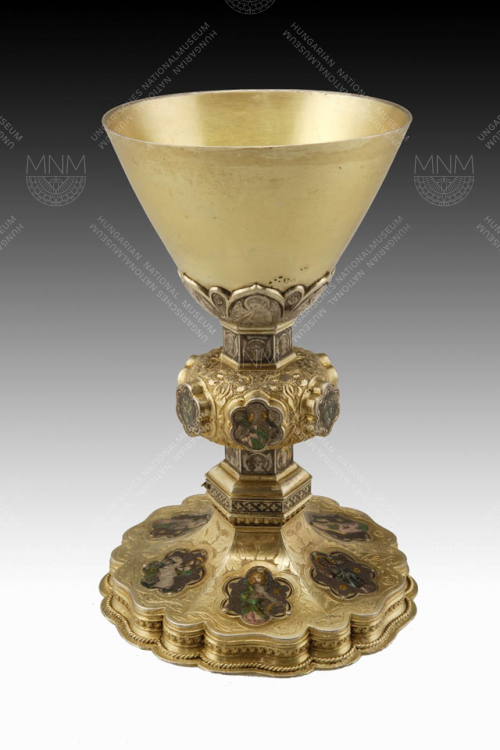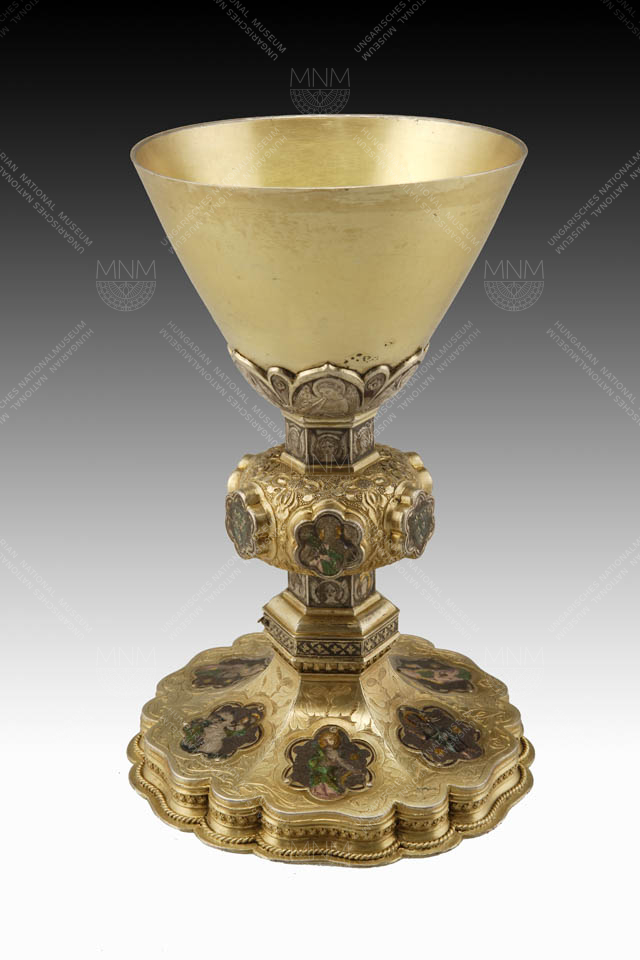
Room 2
The reigns of King Charles Robert and King Louis I (the Great) were favourable with regard to development of the economy and growth of the towns. In the arts, the Gothic style was paramount, while in castle building the standpoints of comfort (stoves) and display (armorial bearings) prevailed, in addition to defensibility. An upturn in the mining of precious metals exerted a favourable impact on goldsmiths’ art especially. The great majority of the surviving masterpieces of the age are liturgical objects. The richness of secular treasuries is shown by a few artefacts only; these are treasure trove and grave goods consisting first and foremost of embellishments for attire.
INTERESTING FACTS:
Most of the gold produced in Europe in the first half of the 14th century came from mines in Hungary.
Made from stone of different types and different hues, the fountain at Visegrád once had painted decoration also.
The first tiled stoves in Hungary were made in the 14th century.
The Louis the Great double cross exhibited is a 19th-century Vienna forgery, but the various enamels on the foot part are original.











